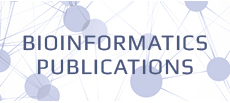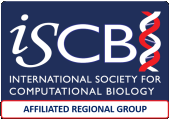4 years PhD position in Computational Biology at SEMM (European School of Molecular Medicine), located at the IFOM-IEO-IIT campus in Milan, Italy
Online application Deadline August 2nd 2017
The role of RNA methylation in the control of mRNA synthesis, processing and degradation
The fine control of epitranscriptional patterns, mediated by the action of multiple writers and erasers, greatly influences the fate of mRNA species, and recent evidence suggests a role for RNAPII in the establishment of these epitranscriptional modifications. Methodological advances are providing powerful tools to finely dissect the transcriptional and RNAPII dynamics, and their joint analysis promises to be pivotal for deciphering the role of marks such as the N6-Methyladenosine.
On one hand, the level and the dynamics of mRNA species are defined by a set of kinetic rates associated to the synthesis and processing of immature mRNAs and the degradation of mature mRNA molecules. Integrative analysis and mathematical modeling of total and nascent mRNA-seq data is enabling investigators to precisely measure these kinetic rates genome-wide. Among these, the rate of processing and degradation seem to be influenced by the action of RNA binding proteins, whose binding to the target transcripts can be modulated by the presence of epitranscriptional marks.
On the other hand, the life-cycle of RNAPII recruitment and progression along the transcriptional units is intimately linked to mRNA synthesis and processing, and seems to be able to influence the patterning of epitranscriptional marks. To this regard, critical is the ability to quantify the various steps of the RNAPII life-cycle - including recruitment to the 5’ transcripts end, initiation, pause-release, elongation and detachment from the 3’ end – as can be obtained through mathematical modeling of RNAPII ChIP-seq data.
Altogether, experimental and computational methods – including those developed in our group - are nowadays mature to decipher the fascinating and intricate interplay through which the epitranscriptome and the RNAPII life-cycle mediate the transcriptional dynamics.
The computational candidate will join the “Computational Epigenomics” group (https://www.iit.it/centers/cgs-semm), working together with other computational and wet-lab scientists in the context of the EPITRAN European Network (http://www.cost.eu/COST_Actions/ca/CA16120), with the final goal of deciphering the interplay between the epitranscriptome and the dynamics of transcriptional regulation.
Familiarity with the Linux environment, programming skills (especially in R), a background in bioinformatics or physics, and extensive notions of biology will be advantageous.
Selected publications
-
Galeota E et al, Briefings in Bioinformatics 2016
-
Kishore K et al, BMC Bioinformatics 2015
-
de Pretis S et al, Bioinformatics 2015
-
Sabo A*, Kress TR*, Pelizzola M* et al, Nature 2014
-
Lister R*, Pelizzola M* et al, Nature 2011
-
Lister R*, Pelizzola M* et al, Nature 2009
-
Koga Y*, Pelizzola M*, et al, Genome Research 2009
-
Pelizzola M*, Koga Y* et al, Genome Research 2008
Links to:
-
The School: http://www.semm.it/
-
The Research Center: https://www.iit.it/centers/cgs-semm
-
The Institute: https://www.iit.it
For informal enquiries: mattia.pelizzola AT iit.it




